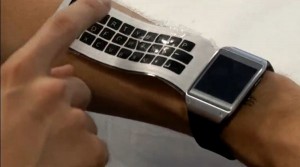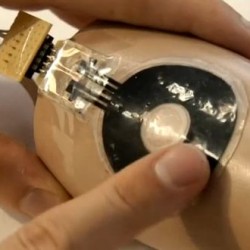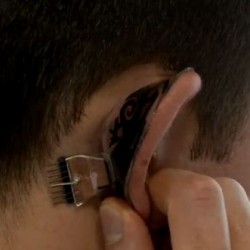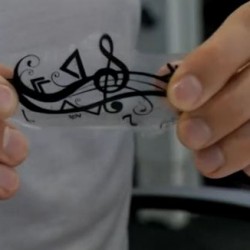Aug.10 (Reuters) Imagine controlling your smart phone with one of these skin-worn silicone patches.
The makers of iSkin say its thin, soft and flexible design presents new possibilities for on-body mobilecomputing.
Martin Weigel, PHD student in the Embodied Interaction Group at the Max Planck Institute for Informatics, saying:
“Current electronics are mostly using rigid components which are very uncomfortable to wear on the body and are limiting the locations to, for example, the wrist or on the head to be worn. But our sensor is a flexible and stretchable sensor, so it can cover many locations. For example, even the backside of the ear or the forearm. So, we have a much larger input space than current electronics allow for.”
The prototype system is based on so-called ‘electronic skin’ developed for more life-like robots and realistic prosthetic limbs.
A tattoo-like design is first sketched out on a computer.
The shape is then laser cut from silicone laced with conductive carbon black powder.
This is sandwiched between two sheets of clear biocompatible silicone.
It’s fixed to the skin with a cosmetic adhesive that is easily peeled off after use.
The prototypes are currently hard-wired to a computer, but the makers say microprocessors already exist that could make it wireless.
They also believe it could eventually be powered using the body of the wearer as an energy source.
Martin Weigel, PHD student in the Embodied Interaction Group at the Max Planck Institute for Informatics, saying:
 “There is also research in using the body as an energy source and harvesting energy from the body, like for example from the temperature or from the blood flow directly.”
“There is also research in using the body as an energy source and harvesting energy from the body, like for example from the temperature or from the blood flow directly.”
While they have no immediate plans to develop this iSkin prototype further, the team hope it will inspire future research on electronic skin for human-computer interaction.










